Honda e review: a cute, tech-packed electric car for the city, with one big compromise
If you want lots of tech in your EV, the Honda e delivers
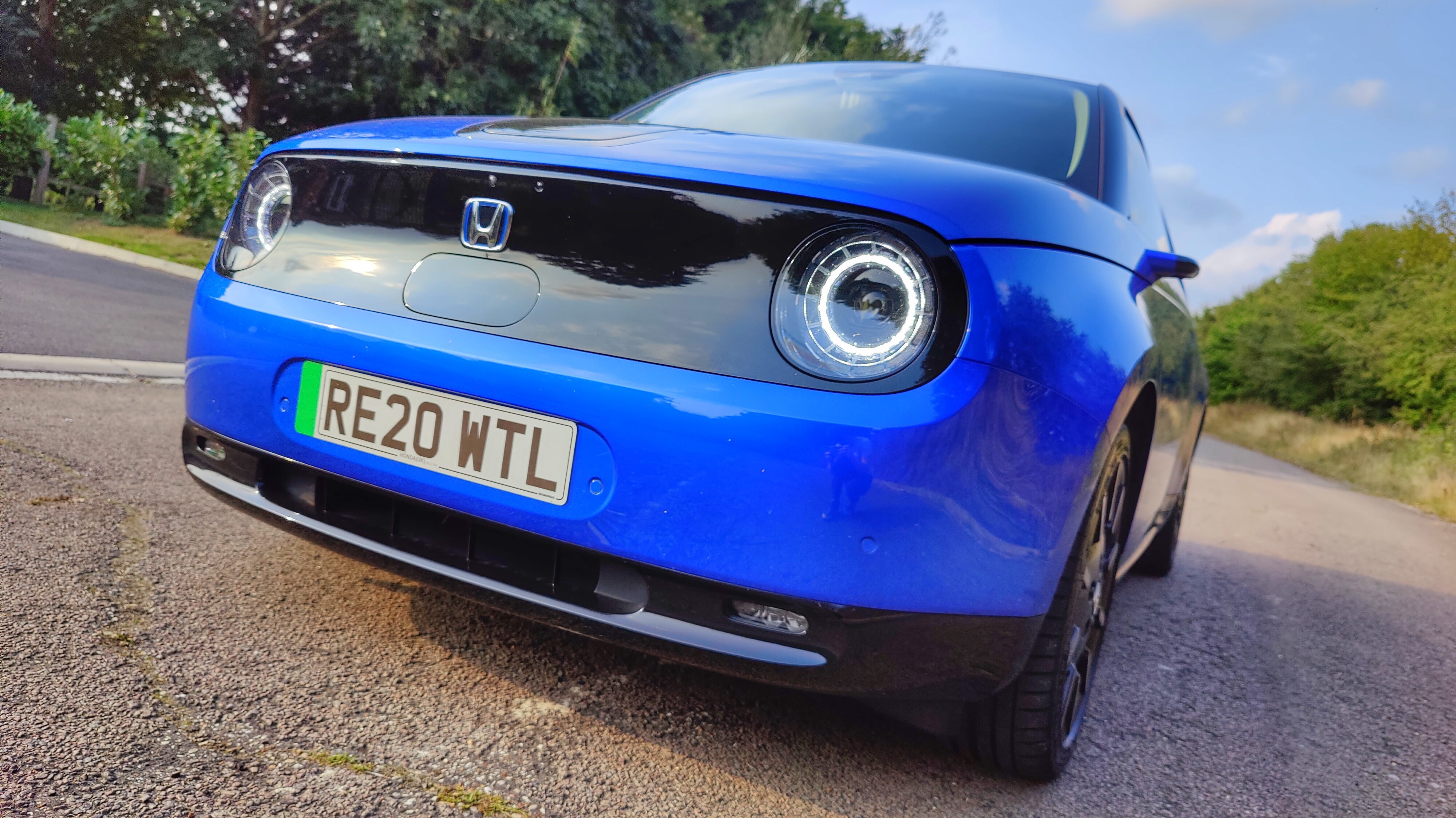
One minute review
The Honda e is cute, comfortable… and compromised. It's packed full of tech, including a neat party trick that allows you to connect a console to the car and play games on one of its 12-inch screens, while the exterior design will have passers-by cooing.
However, many people want their car to give them a sense of freedom and adventure, and the Honda e's range is its major limiting factor.
Honda says it's good for up to 125 miles WLTP (Worldwide Harmonised Light Vehicle Test Procedure - an industry standard test) on a single charge, but realistically you're looking at closer to 100 – and if you find yourself on a motorway you'll get less than that again.
It's not designed for long-distance travel though. The Honda e is very much a car built for European city driving – it's a car to get you around town, and it can play the 'second car in a household' role comfortably, providing emissions-free driving for those trips to the shops, the school run or your daily commute (provided it's not too far).
There's space in the boot for shopping bags, and there are rear seats which adults can just about fit in – kids will be fine – while the front of the cabin is airy, clean and modern.
If you like screens, you're in luck, as the Honda e has five stretched out across its dash. There are three 12-inch displays – the central infotainment screen, passenger screen and digital screen – while the additional two are smaller displays providing a live feed from the digital wing mirror cameras.
There are also plenty of ports, including multiple USB slots, an HDMI-in and a full-size power outlet.
Get daily insight, inspiration and deals in your inbox
Sign up for breaking news, reviews, opinion, top tech deals, and more.
The Honda e may be a compact electric car, but it's bursting full of tech to keep you engaged and entertained. However, the range will likely be a deal-breaker for many, and there are other small EVs that offer more range for less money – although none of them looks quite as cute as the e.
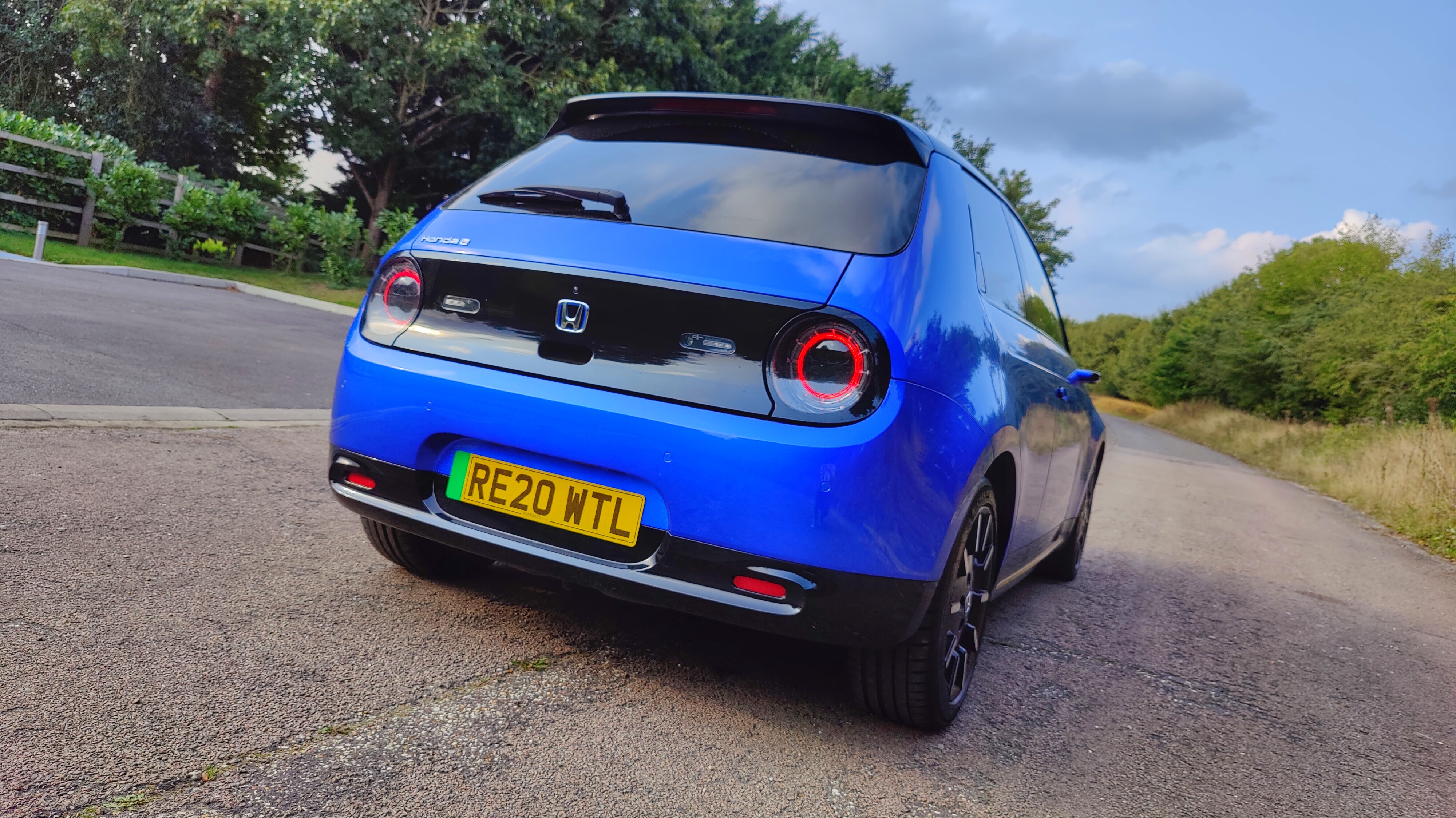
Honda e price and availability
The Honda e price starts at £29,165, but we drove the (slightly) more powerful Honda e Advance, which starts at £31,665.
Add metallic paint – our review vehicle came in an attractive Crystal Blue shade –and the final price of the electric car TechRadar drove was £32,215.
That makes the Honda e one of the pricier compact EVs on the market, with the Fiat 500e and Renault Zoe both offering lower starting prices.
You can buy the Honda e in the UK and across Europe, but we don't yet know if it'll be released in the likes of North America or Australia.
Honda e design
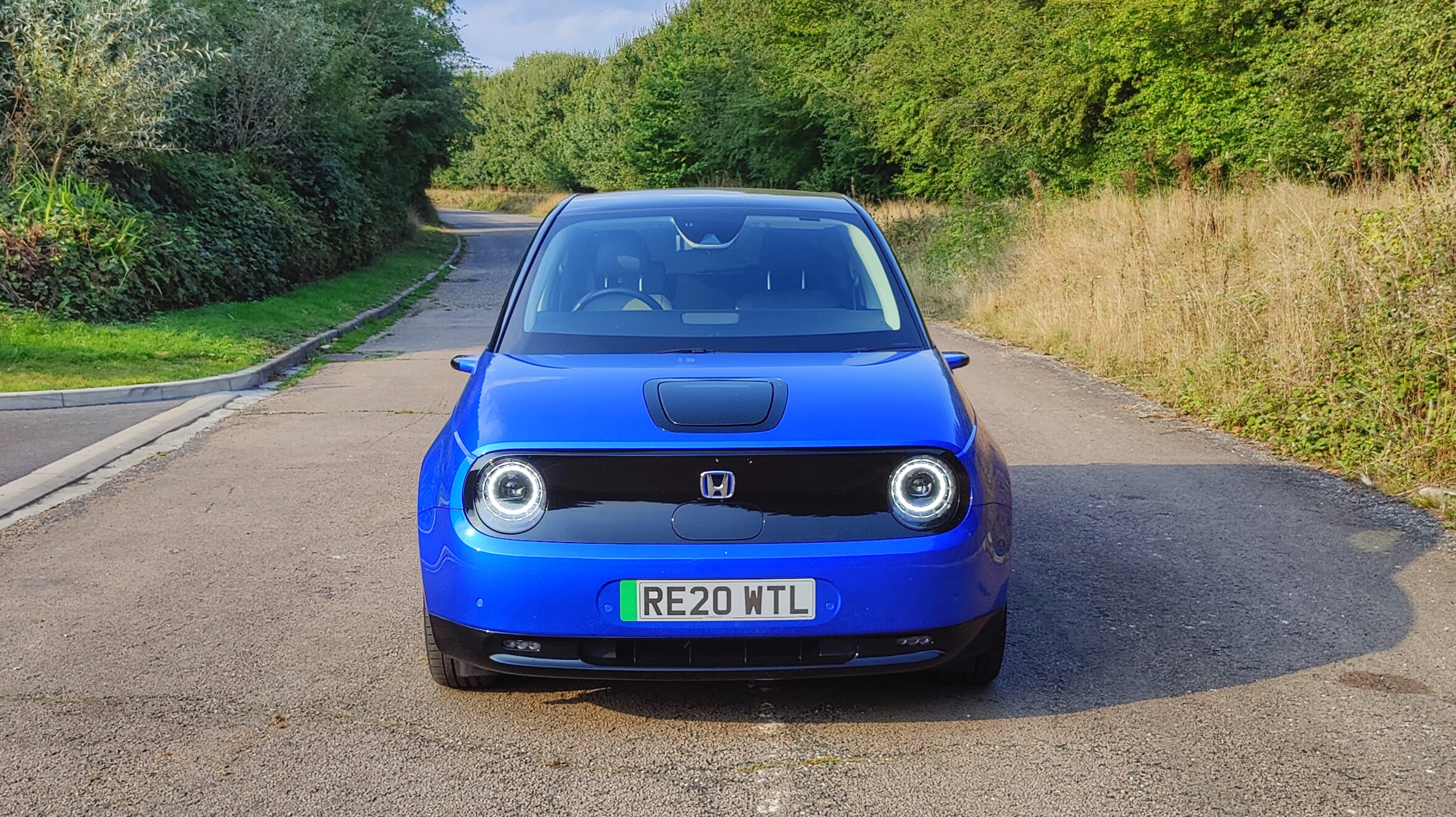
Honda e Advance
Power: 113kW
Battery: 35.5kWh
Top speed: 100mph
0-62mph: 8 seconds
Range: up to 125 miles WLTP
Price: £32,215
Cute. That was the most common response when we asked others what they thought of the Honda e.
Its rounded edges, circular head and tail lights, and dinky dimensions make for an attractive aesthetic, and one we wouldn't blame anyone for falling in love with just a little bit. We were certainly smitten with the car's exterior styling.
The door handles sit flush to the bodywork, popping out when you hit unlock on the key, while the wing mirrors have been replaced with slender camera stalks. Both of these design decisions help reduce drag and increase efficiency – and as we're already mentioned, and will discuss in more detail later, you'll want every bit of efficiency you can get here.
Even though the Honda e is a small car, it still comes with four doors, allowing for easier access to the rear seats. While the handles for the front doors are located where you'd expect them to be, the handles for the rear doors are close to the rear frame of the car (the C pillar), and not quite as obvious at first glance as they blend into the black window bezel.
The rear handles don't pop out automatically – passengers need to physically press one side in to pop the other side out and open the door. It's not as complicated as it might sound, though, and their almost-hidden positioning keeps the sides of the Honda e clean.
Climb inside and the clean aesthetic continues. Honda claims the minimalist interior is designed to feel like a lounge, and while it may not look like any sitting room you’ve ever been in, it is comfortable.
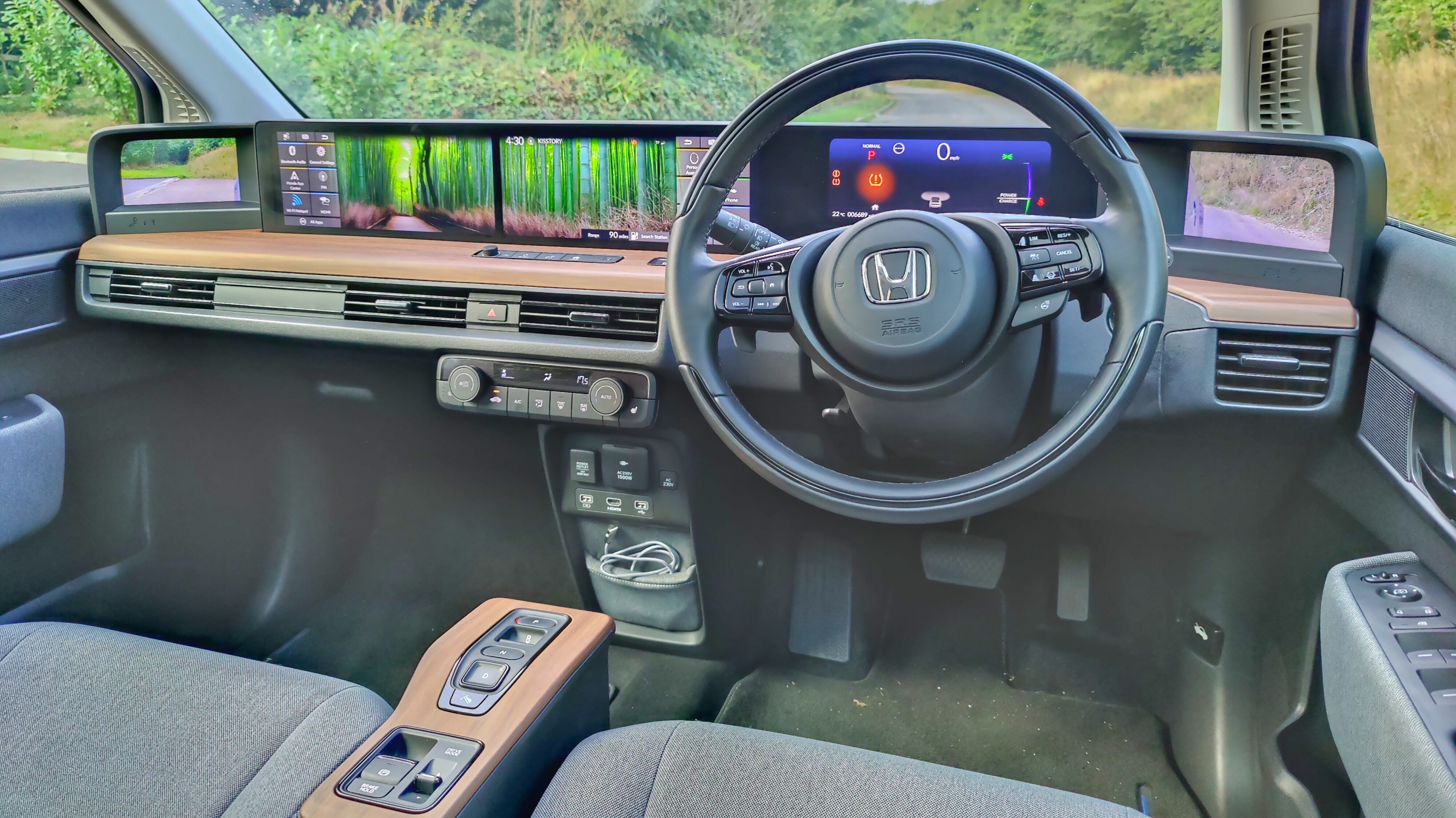
It also feels surprisingly spacious for front seat passengers, considering the overall size of the car. The front seats are accommodating and comfortable, with enough leg and head room on offer.
A center console sits separately from the dash, meaning there's a clear gap between the two footwells, which helps to create the illusion of the Honda e feeling bigger than it actually is.
This space is large enough to place a bag in, although you'll want to be careful that it doesn't topple into the driver’s footwell.
The central section houses the drive select buttons, parking brake controls and drive mode switch, and there's also a storage area towards its rear, with movable partitions allowing you to customize the space; for example, you can make sure that your drink is secure, whatever size it is, although there's also a pull-out cup holder at the front of the center console that provides better access to your drink as it’s in front of you, rather than behind your elbow.
The door pockets span just a third of the width of the doors, and are relatively slender – but there is space for a drinks bottle here, as well as for keys or a phone.
In the back there are two seats – there's no middle third option here – and while legroom is at a premium and the headroom is a touch limiting, two adults are able to sit here.
You're unlikely to take the Honda e on long road trips, and passengers should be able to cope with the limited space for short journeys.
Rear illumination is slightly different in the Honda e to other cars, with each seat getting its own dedicated spotlight in the headliner that's controlled via a button on the central column between the doors (the B pillar). This provides better light for each individual than the shared central light found in many cars.
Again, storage is a touch limited, but there is a drink holder in each rear door, and a magazine pocket on the back of the front seats. The trunk is small, but adequate for the size of the car.
In fact, we were pleasantly surprised by how much space there is here, as it felt bigger than we'd expected. There’s enough room for a couple of small cases, or a few overnight bags.
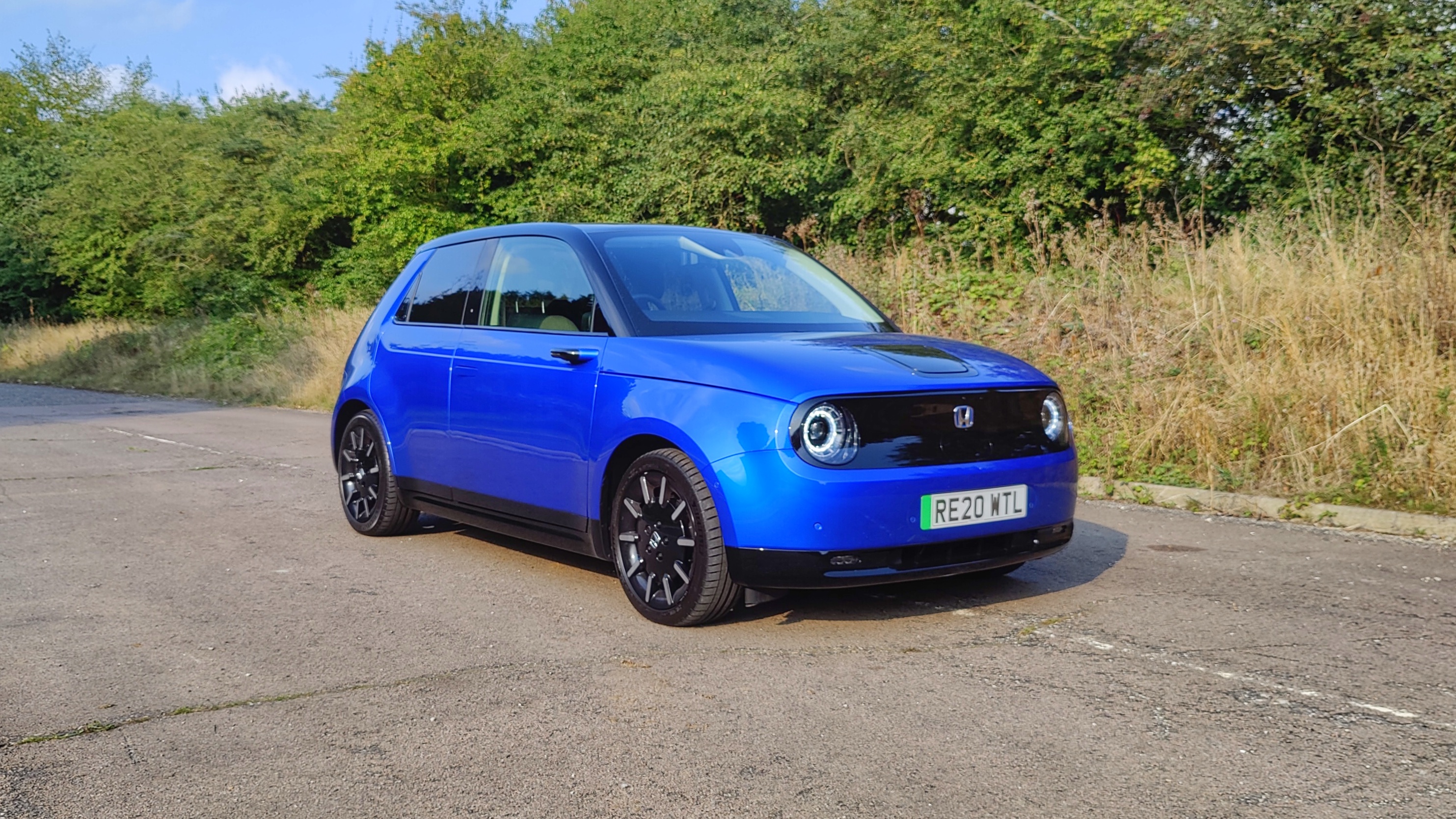
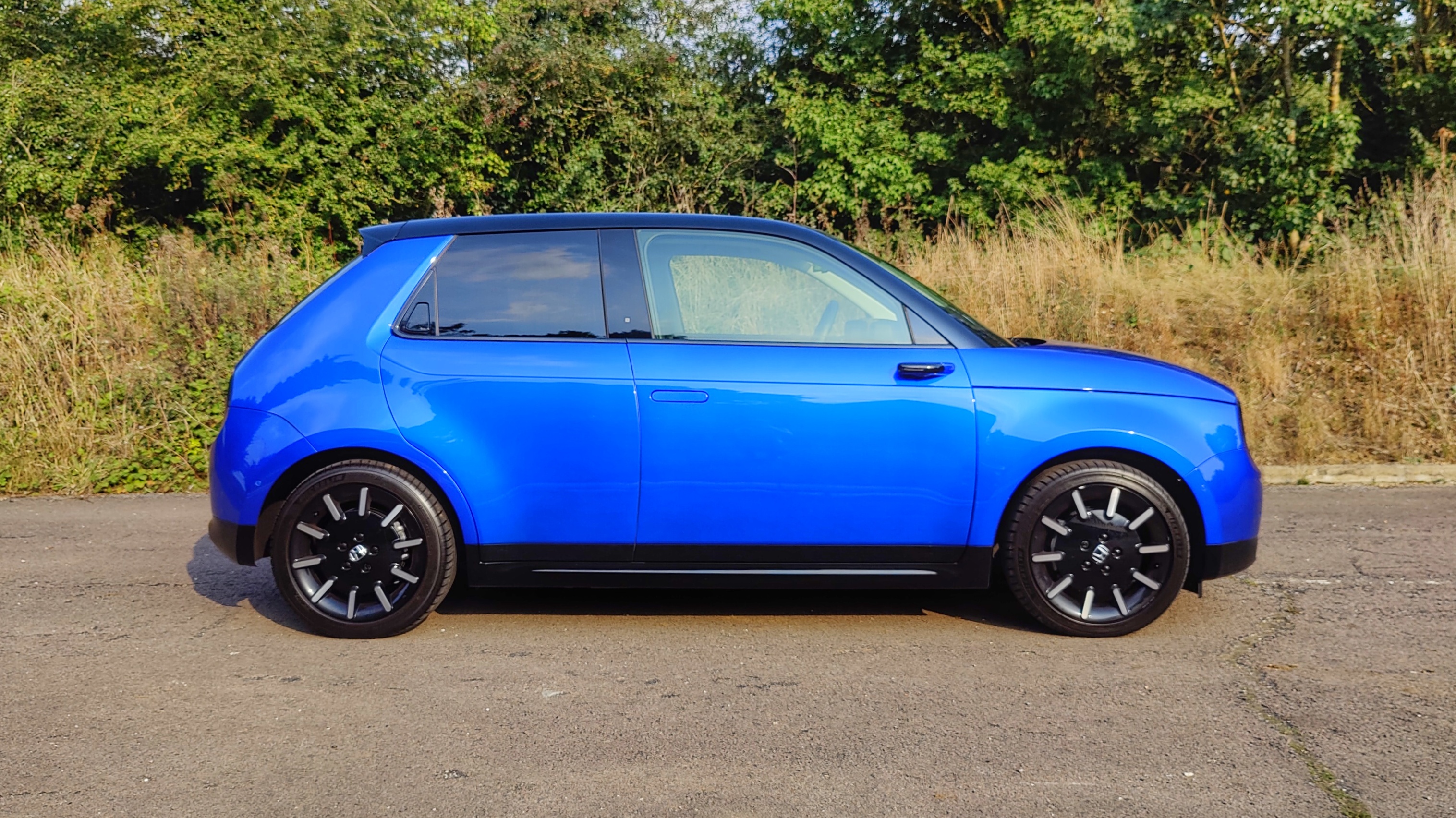
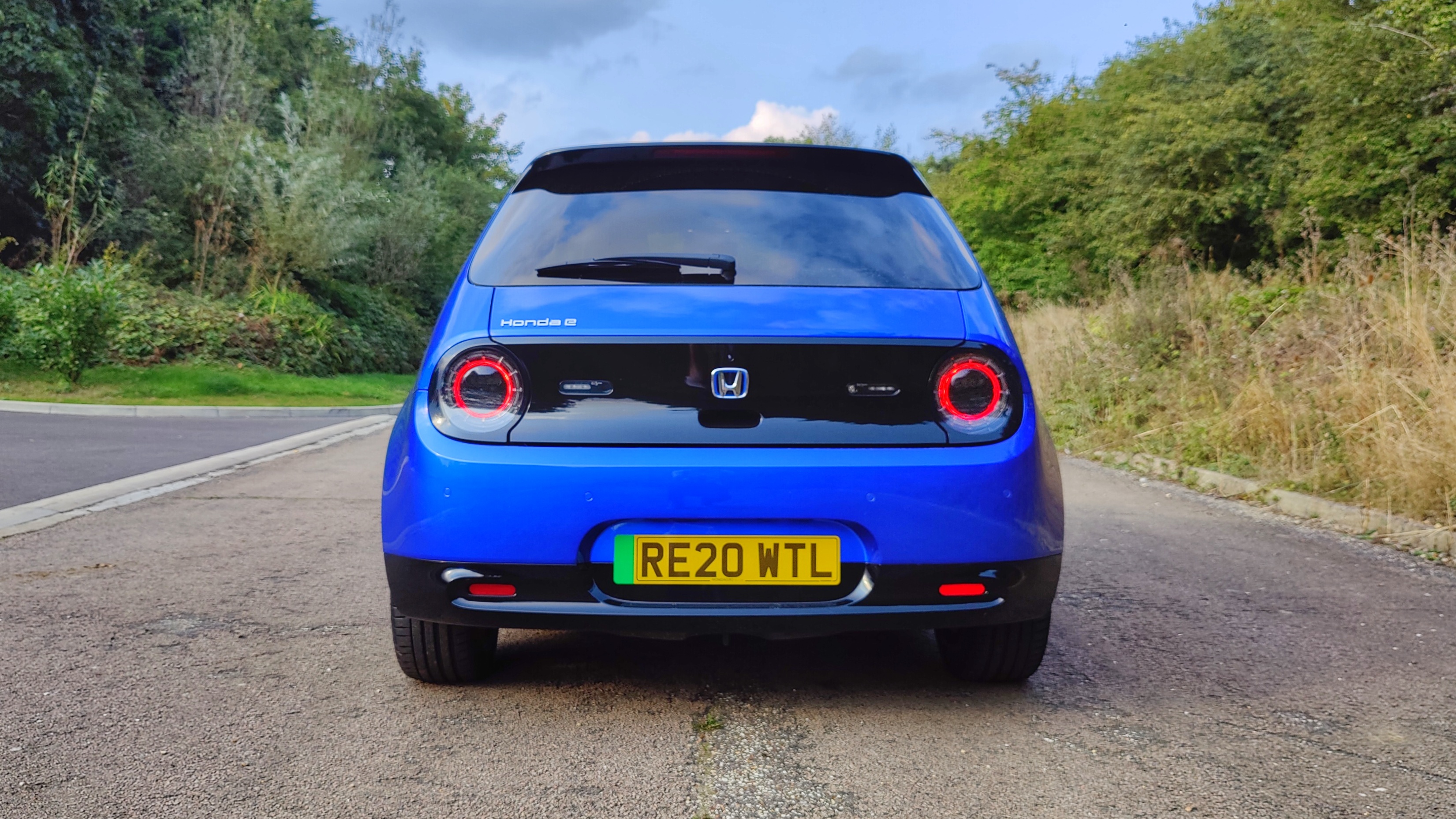
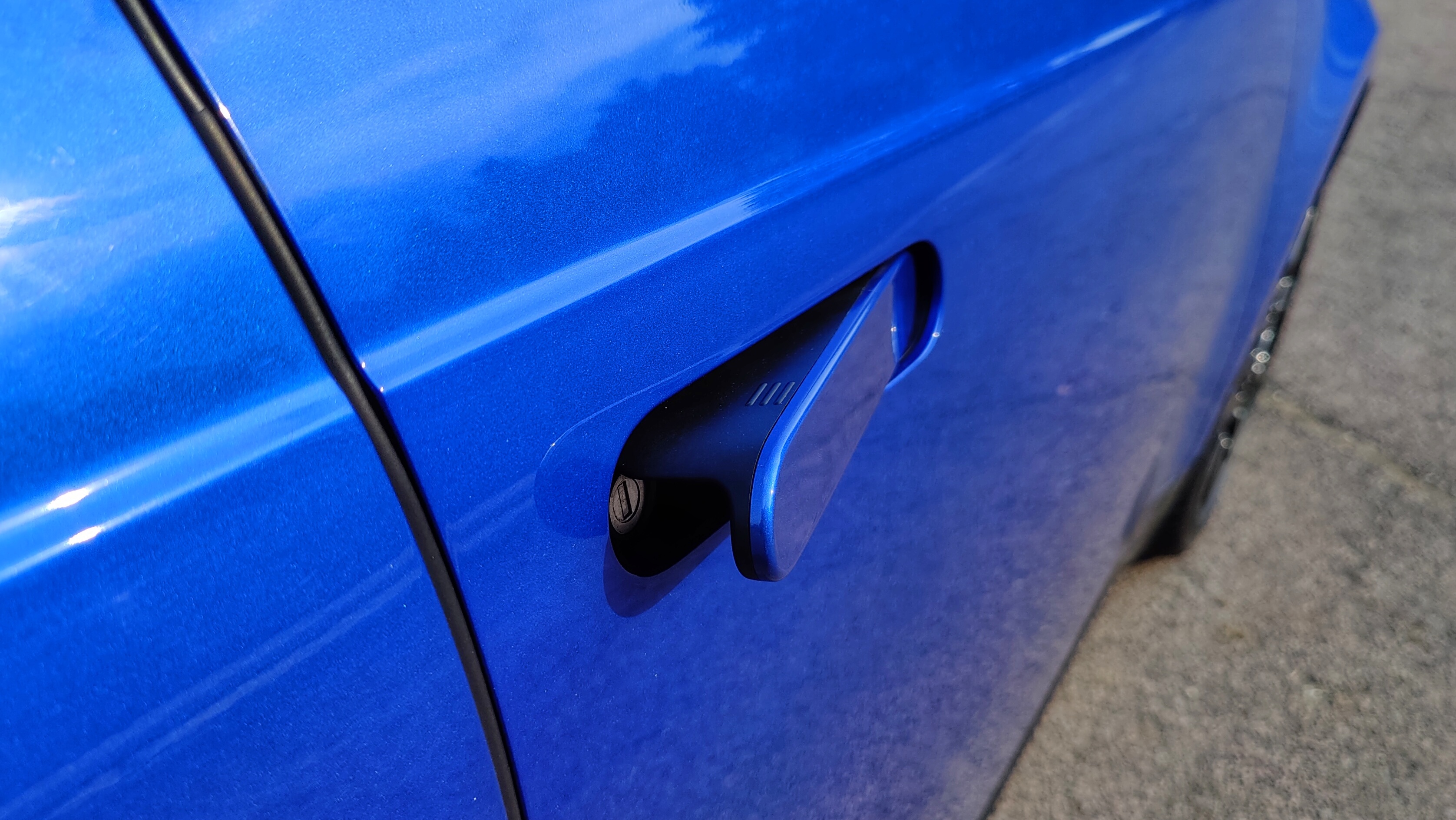
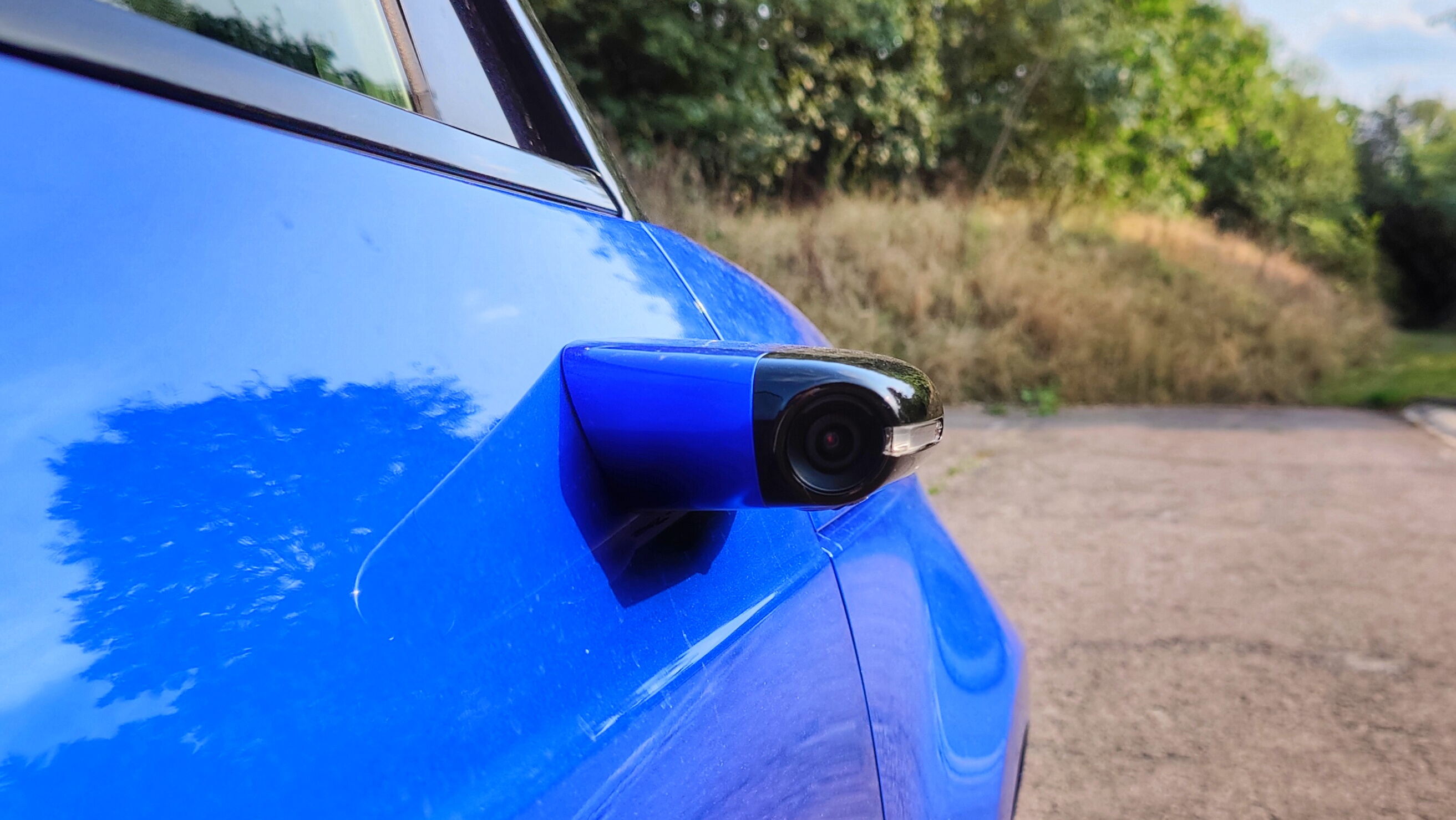
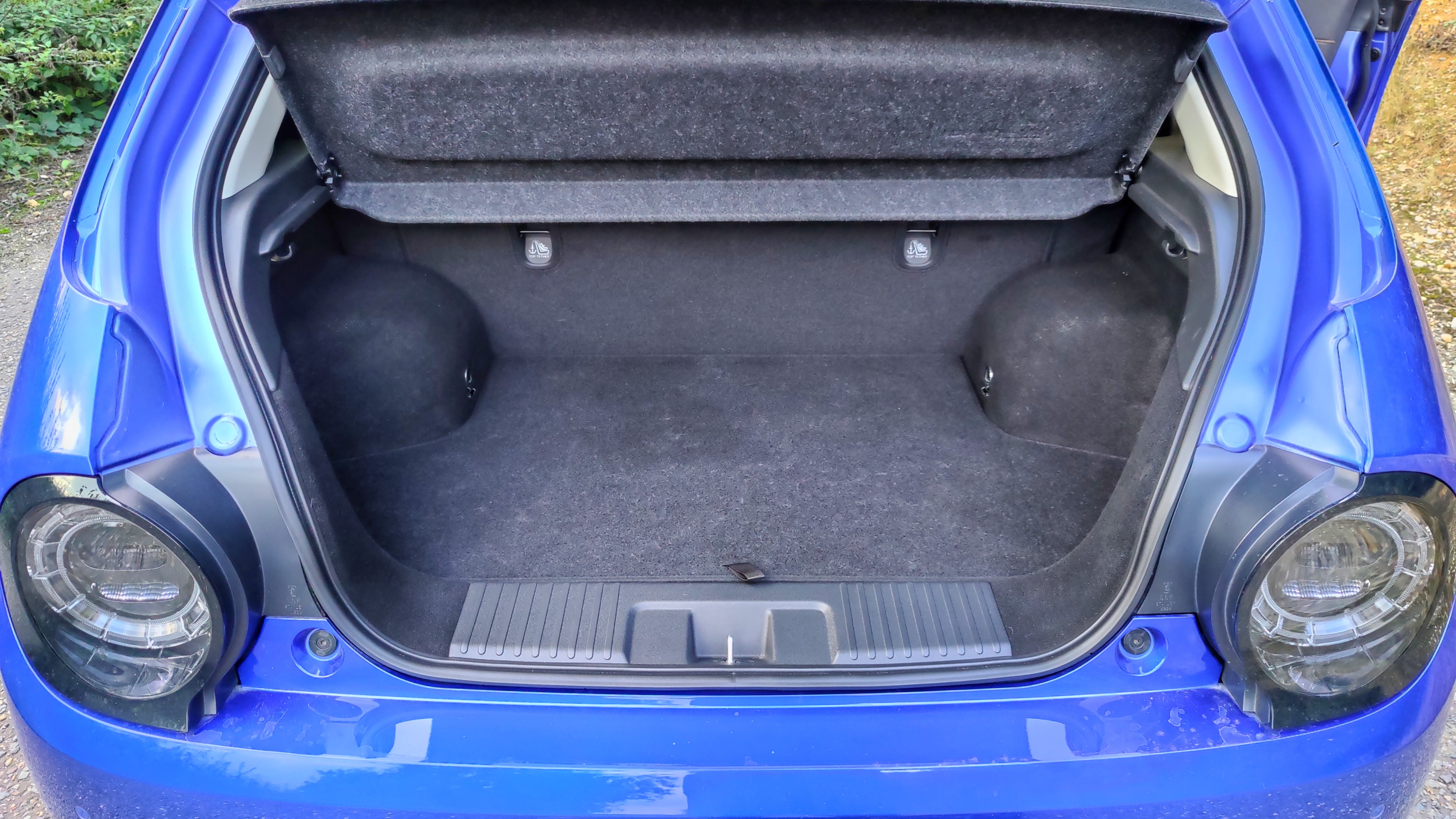
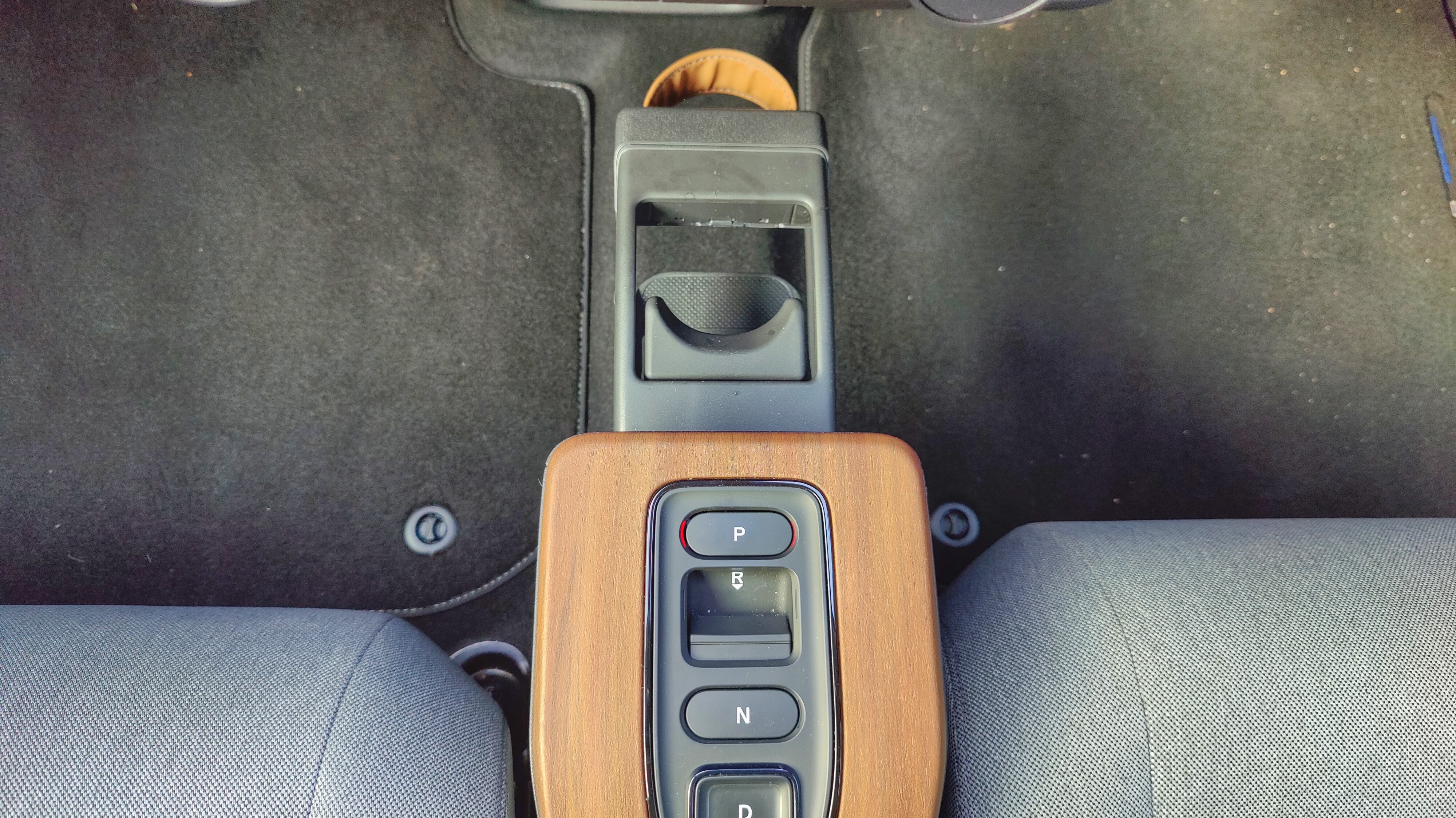
Honda e drive, range and charging
Hop into the driver's seat of the Honda e and there's no start/stop button on display – the car is ready to roll once it's detected the key on your person. Just pop your foot on the brake and select your drive direction and you're off.
Drive select is easy, with large buttons in the central console that offer pleasing feedback under the finger.
The Honda e is agile on the roads. Its compact dimensions and low center of gravity means it's dynamic enough round the corners, and can zip away from lights without hassle.
It's not going to set pulses racing with its 100mph top speed or 8-second 0-60mph time, but there's enough power to get you around town, and the RWD (rear-wheel-drive) configuration gives it a slightly more racy feeling than a front-wheel-drive setup.
The light steering and tight 4.3m / 14ft turning circle mean the Honda e is easy to maneuver even in relatively confined spaces – handy when it comes to inner-city parking.
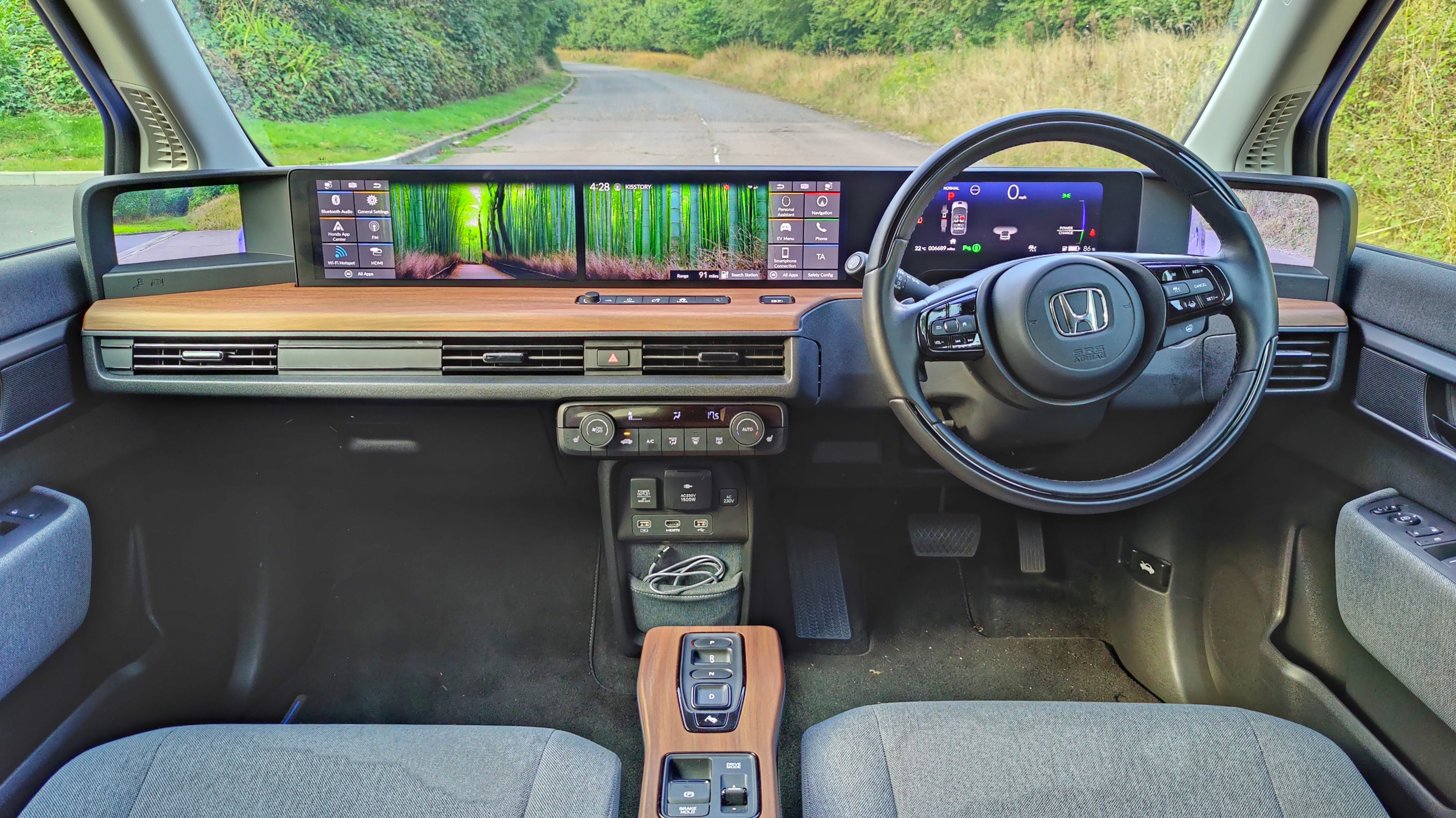
The result is a car that's actually quite fun to drive, feeling not dissimilar to a go-kart at times as you whip it round corners. The ride is relatively smooth, and inside the cabin there isn't too much road noise (at city speeds at least), making the Honda e an enjoyable place to be.
There are two drive modes: Normal and Sport, with Normal being the default setting, and the one we'd recommend you use the majority of the time to get the most range. Sport stiffens the suspension a little and ups the acceleration available under foot, but it's not going to transform the driving experience.
Around town then, the Honda e excels. If you fancy going further afield, however, this isn't the car you want to be in.
The e isn't marketed as a long-distance runner – it's been very much designed as a city-runaround or second vehicle in a household – but when you have a car there's sometimes the temptation to go a bit further.
The official Honda e range is up to 125 miles WLTP, but realistically you'll be lucky if you get 100 miles from a single charge. Sticking to slower residential roads we were able to get over 100 miles from a single charge, but if your routes see you taking faster roads you'll find the battery depletes more quickly.
We drove a route of roughly 60 miles, on mostly fast roads where we kept the speed at around 60-65mph, and the battery depleted 60% over the course of the journey.
Thankfully there was a charger at our destination, so we were able to get a full charge before making the return trip, but even then we didn’t feel overly comfortable as we watched the range tick down.
While the Honda e may be optimized for around-town motoring, it does come with adaptive cruise control and pilot assist, which makes driving on faster roads easier.
It can keep itself in-lane, and follow the car in front, speeding up and slowing down automatically. The system worked well for us, and for the occasional short blast up a motorway it certainly comes in useful.
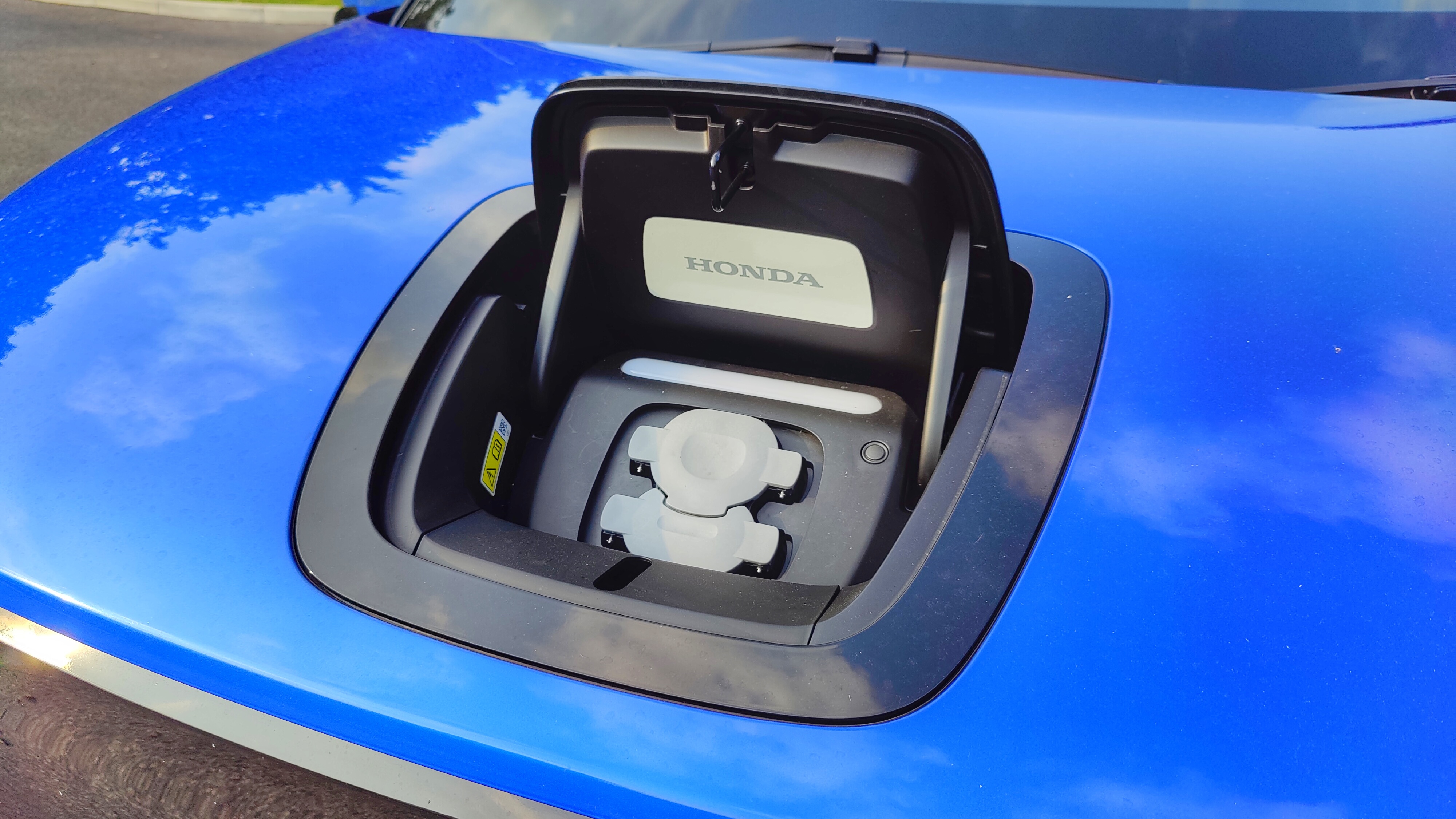
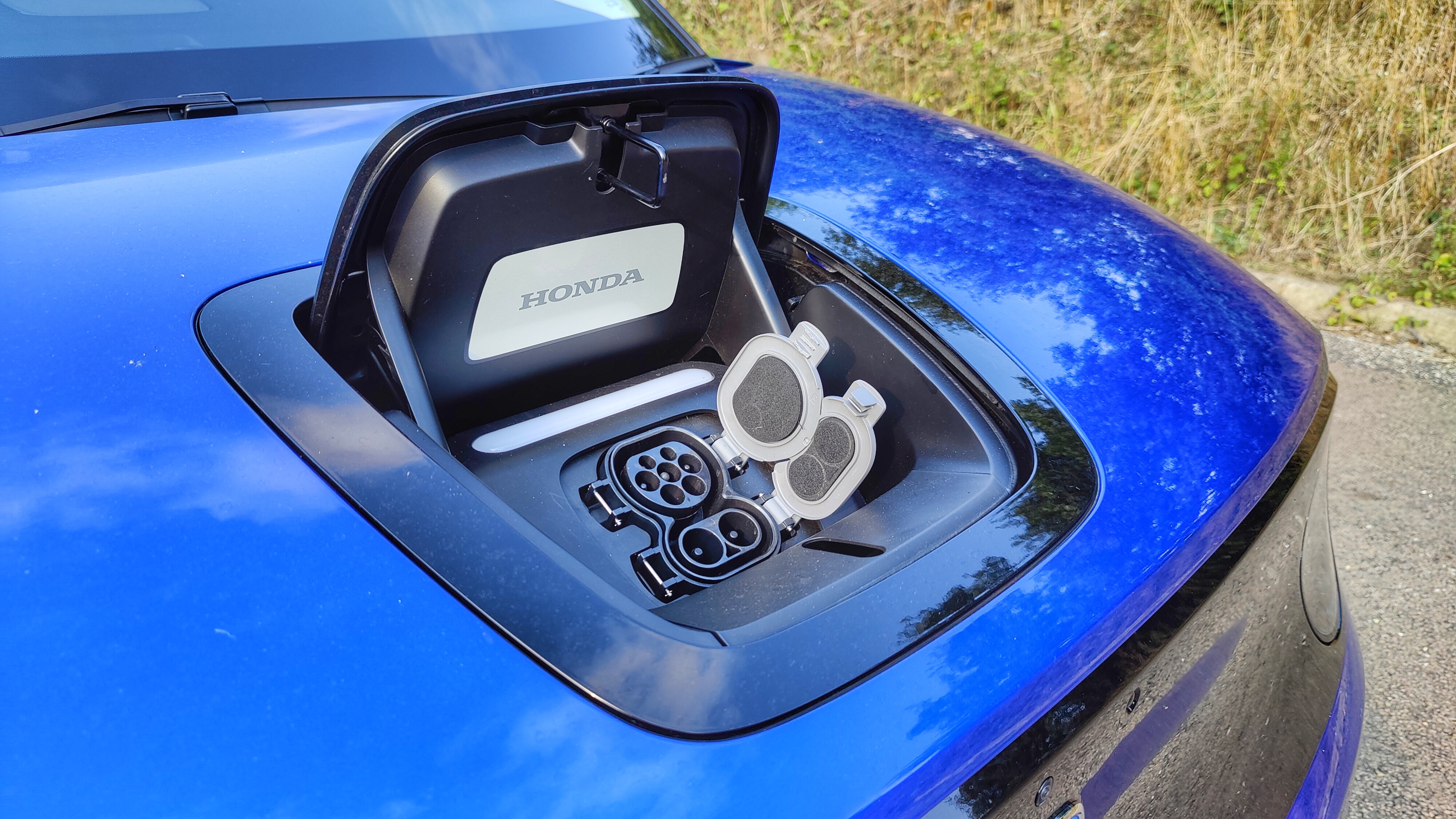
Honda e specs and tech
If you like screens in your car, you're going to love the Honda e. Five displays stretch the entire width of the dash, with three 12-inch displays flanked by smaller screens which act as your wing mirrors.
The main trio of screens comprises one located behind the steering wheel, which acts as your instrument cluster, with the other two offering touch input. The central screen is the main infotainment display, from where the driver will control the navigation and audio.
The third screen is for the front seat passenger, giving them access to infotainment controls that allow them to control media playback, view the map, and even catch up on the latest news and weather.
These touchscreens are bright, clear and responsive, but the UI overall isn't the most intuitive we've used. The tiled quick options layout should be simple on the face of it, but the system's reasoning in surfacing some options over others is sometimes confusing.
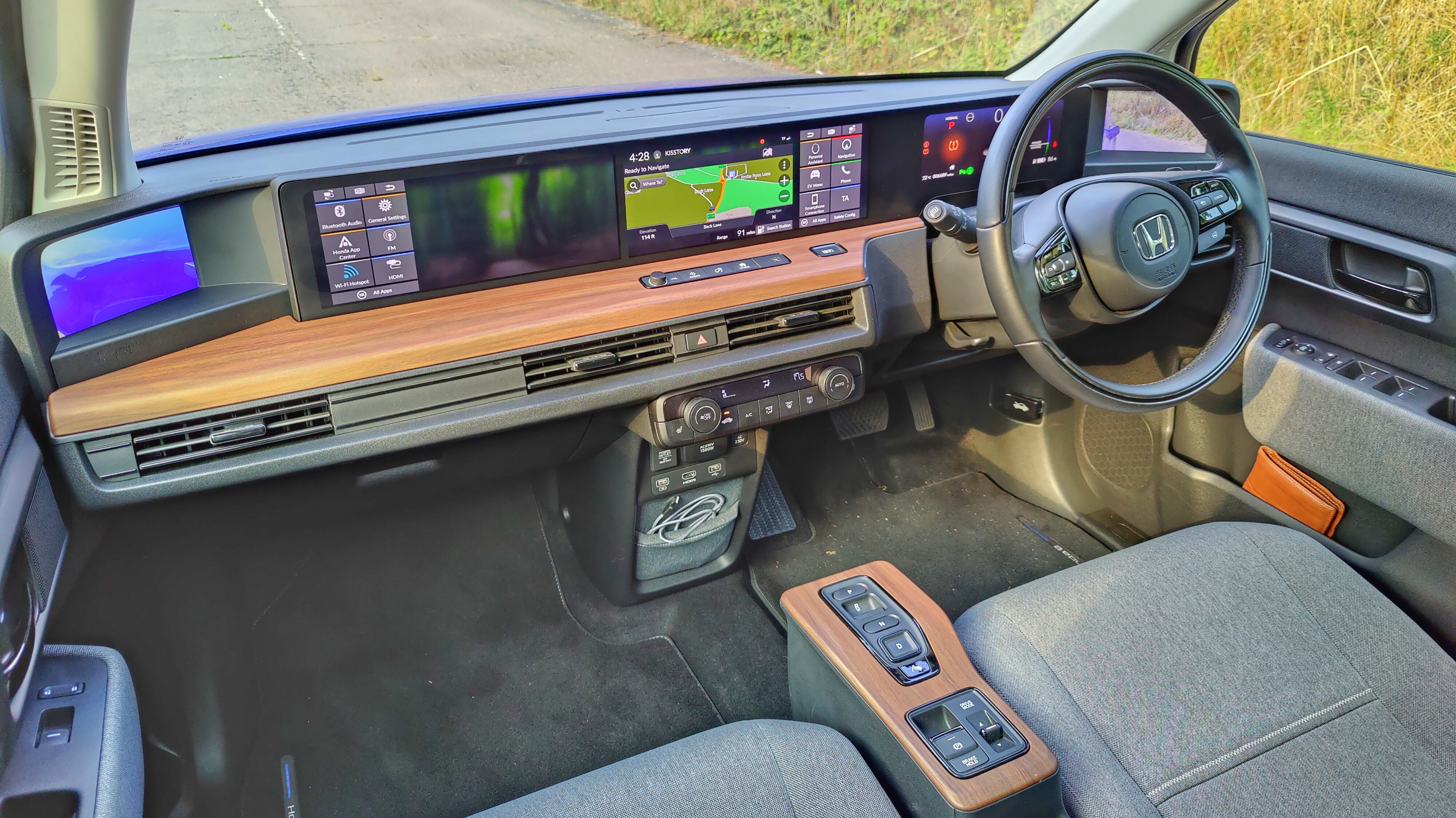
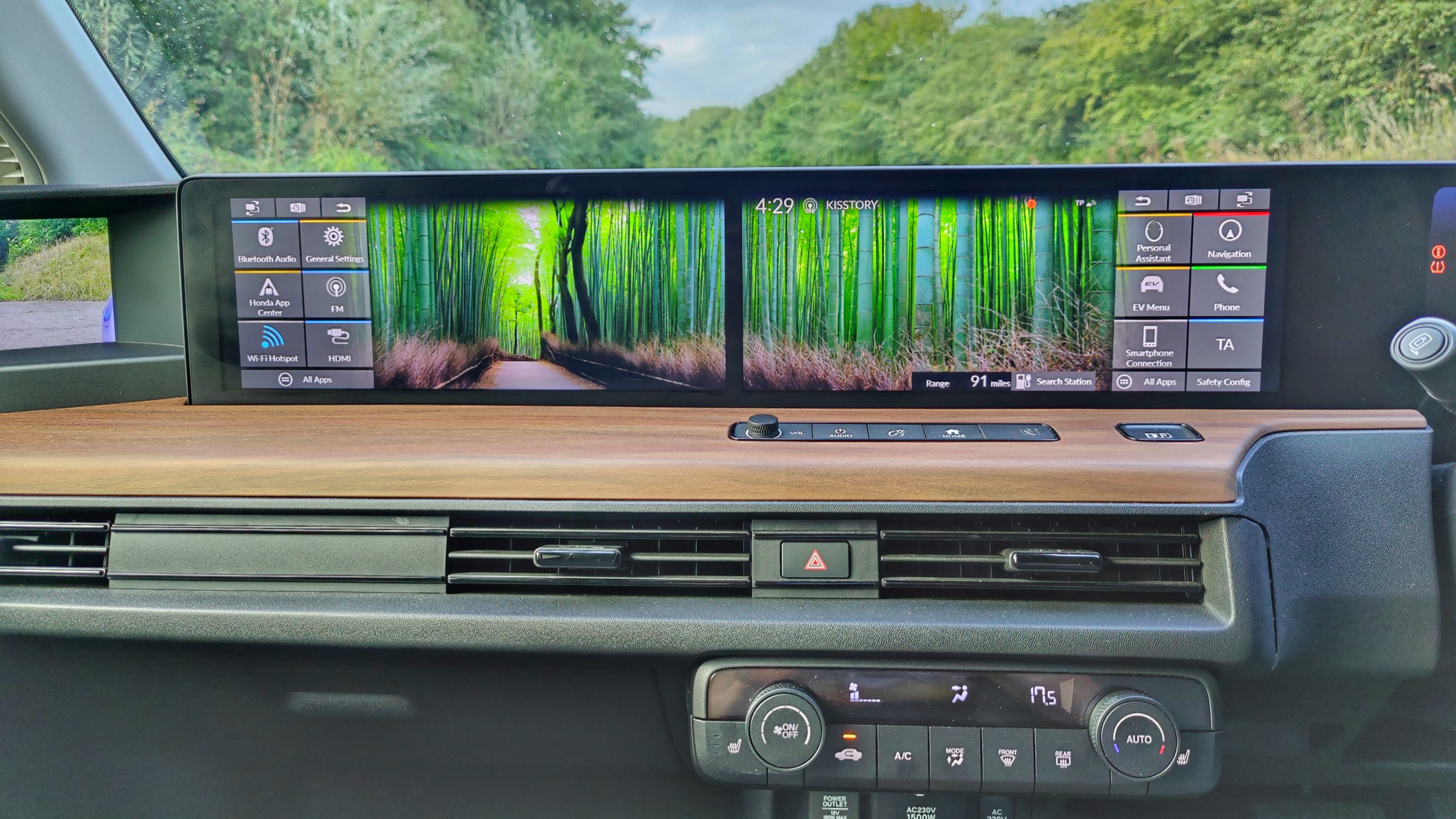
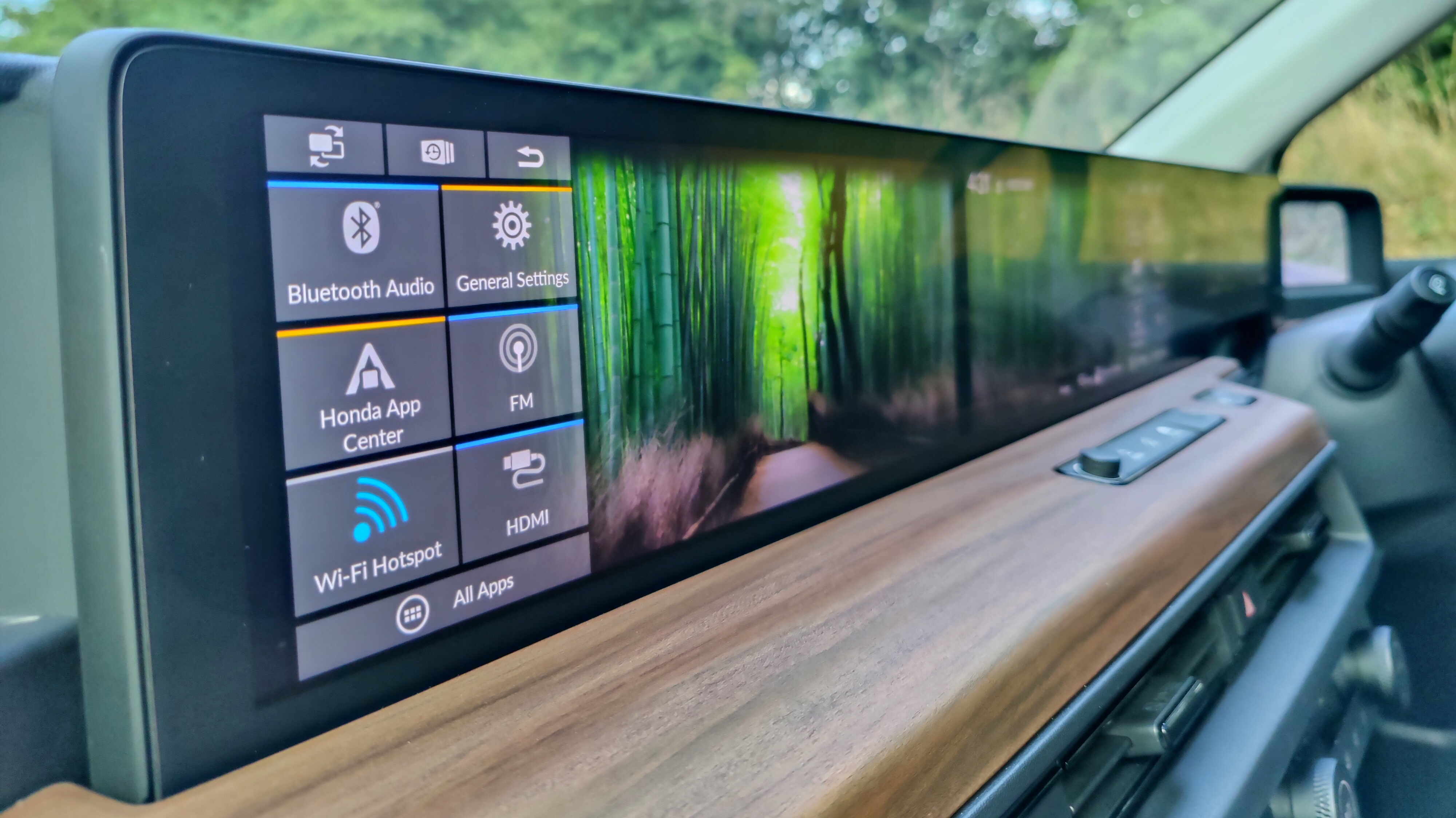
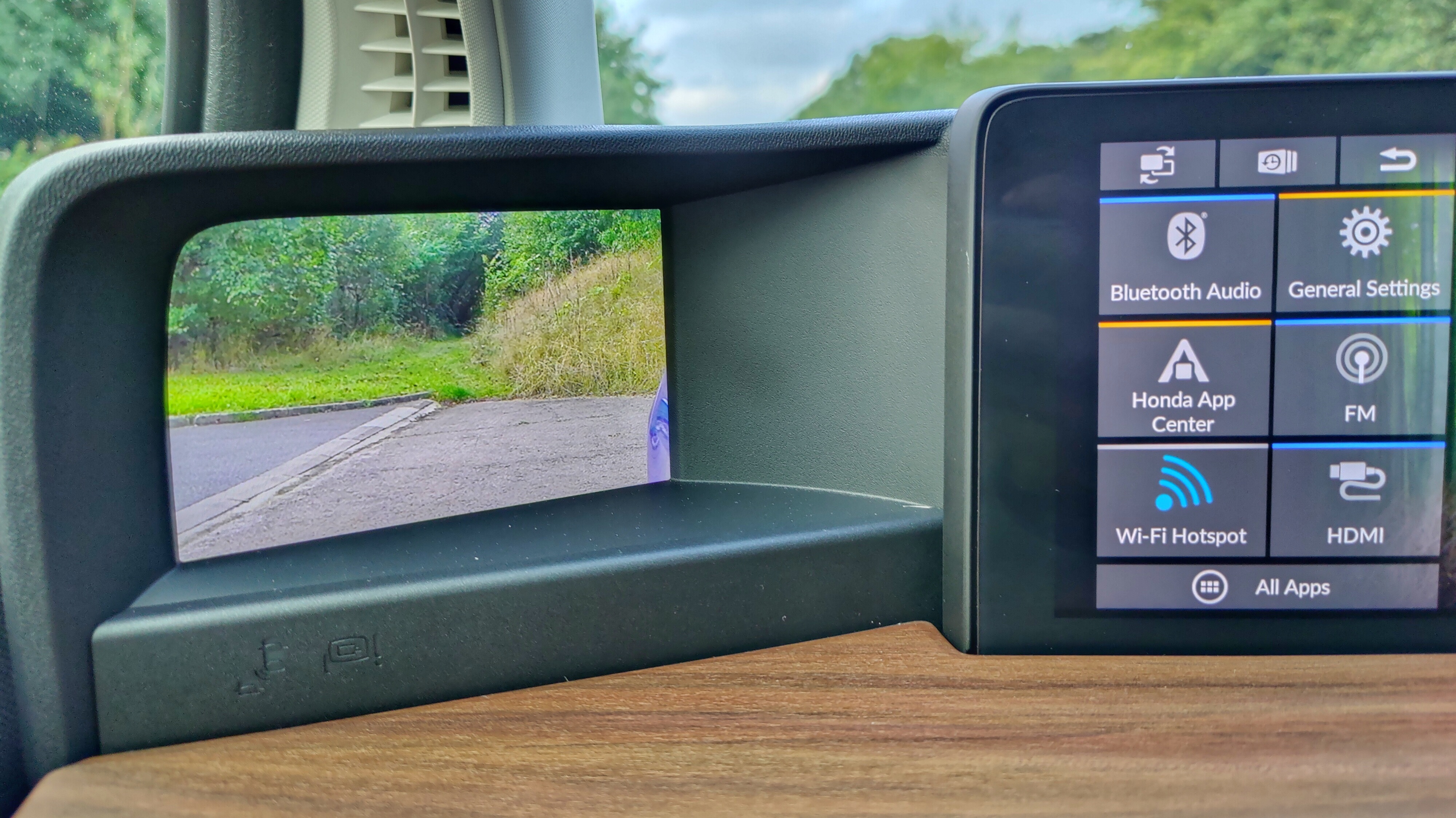
What isn't confusing is working out how you’re going to keep all your devices charged. The Honda e comes with a plethora of ports, with two USB, one HDMI and a 12v port all located at the base of the dash, between the front footwells.
There's a small pocket below these ports, providing you with a place to slip your handset when it's charging.
These ports are joined by a full-size power outlet – the same as you'd find in your home – enabling you to plug in all manner of devices, such as a laptop, and yes, even a PS5. The Honda e isn't alone when it comes to offering a traditional power outlet in its cabin – we’ve seen them in other electric cars, including the Kia EV6 and Hyundai Ioniq 5.
However, the combination of a power outlet and an HDMI input is something more unique, and it means you can plug in devices such as games consoles and play them on the 12-inch display. We managed to hook up the PlayStation Classic, and then a PS5 to play Deathloop in the Honda e.
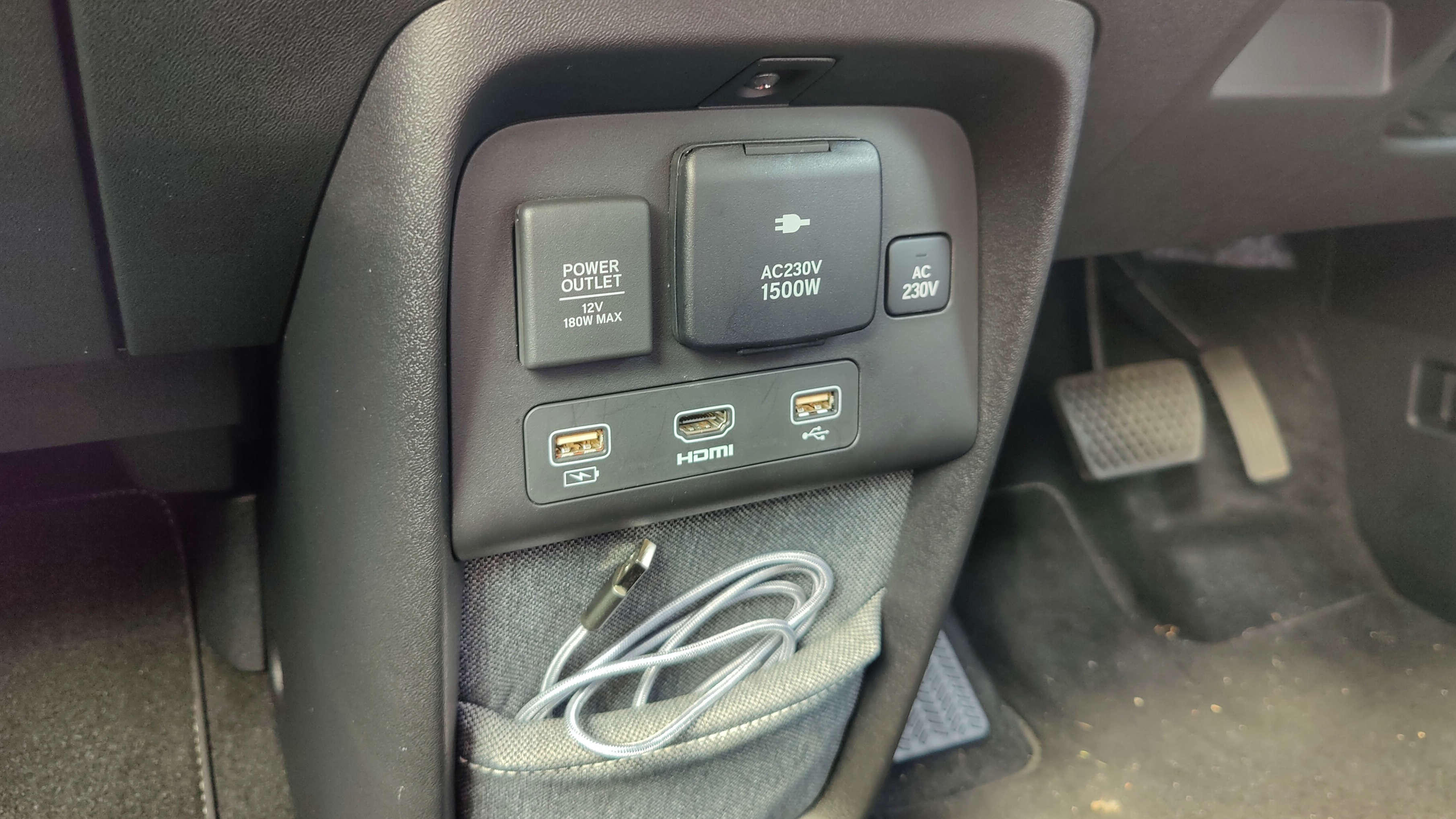
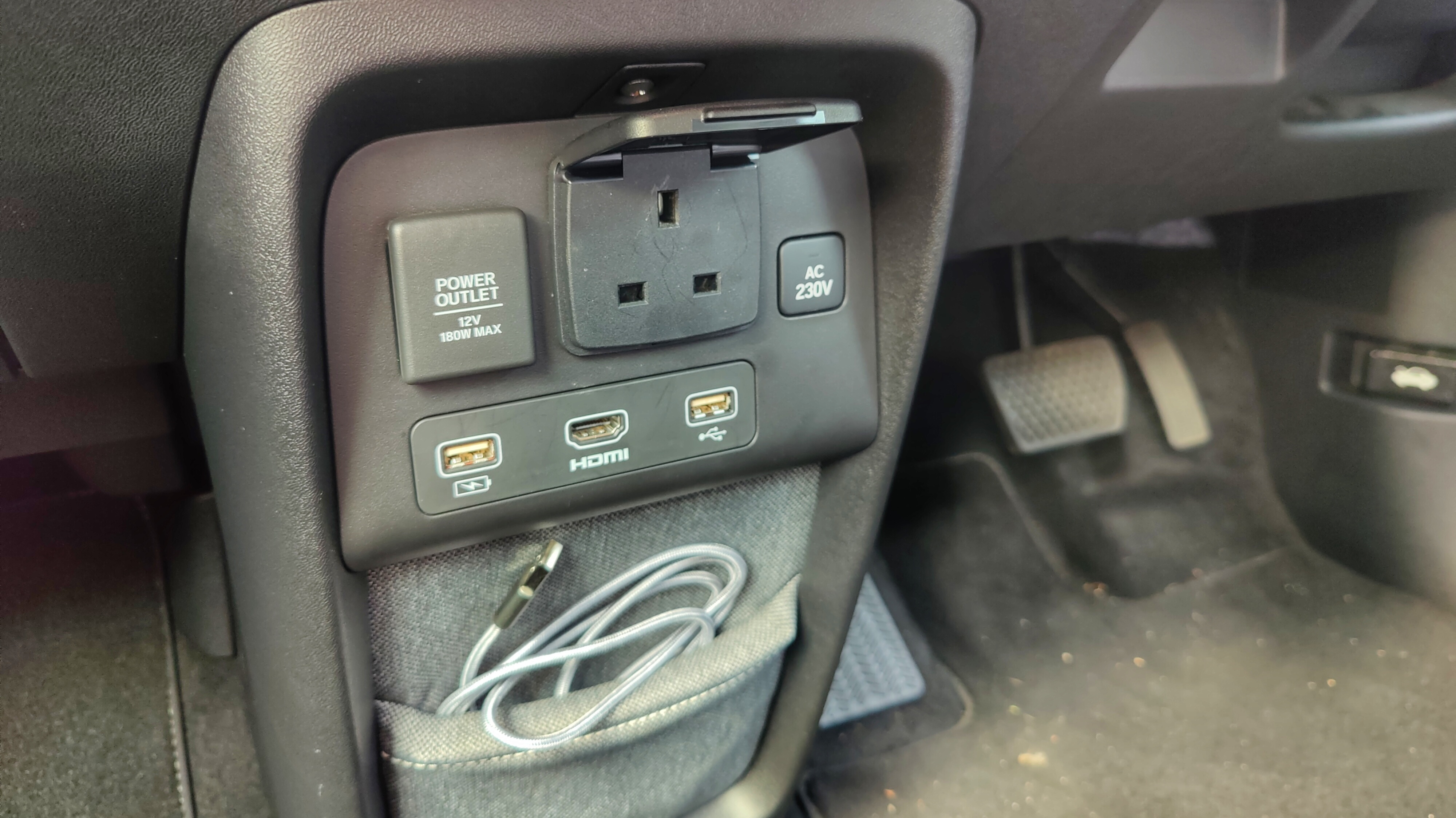
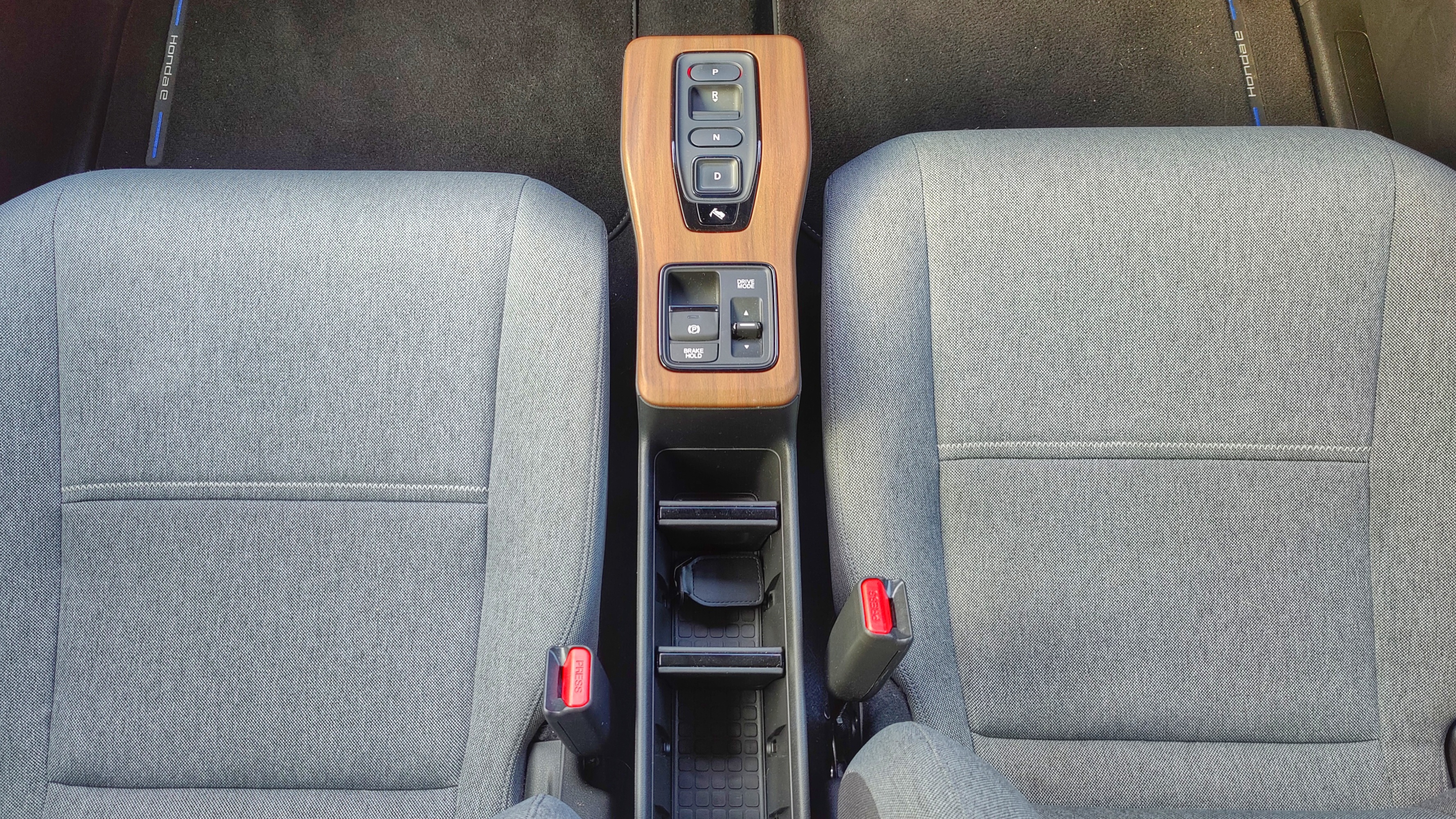
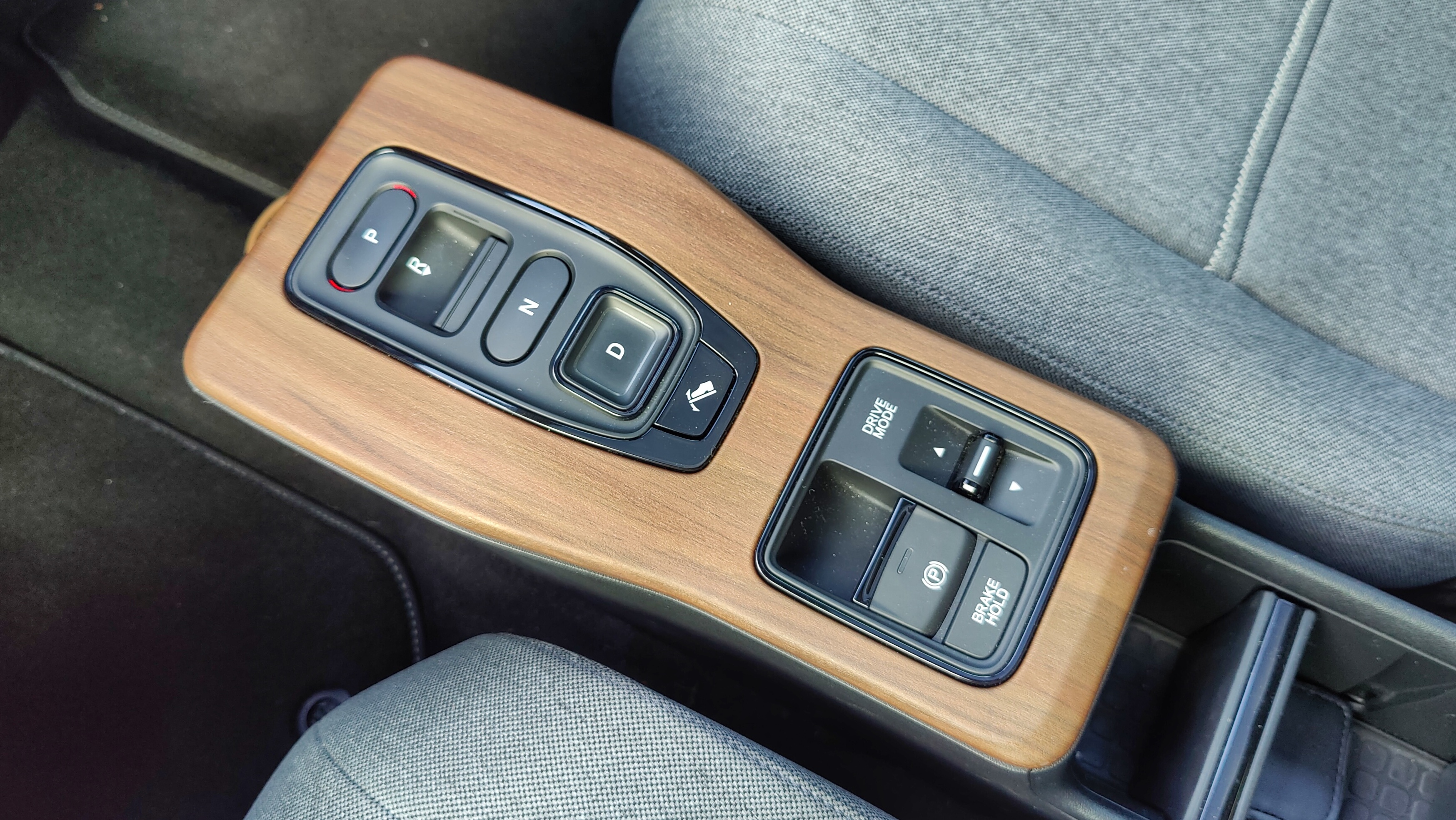
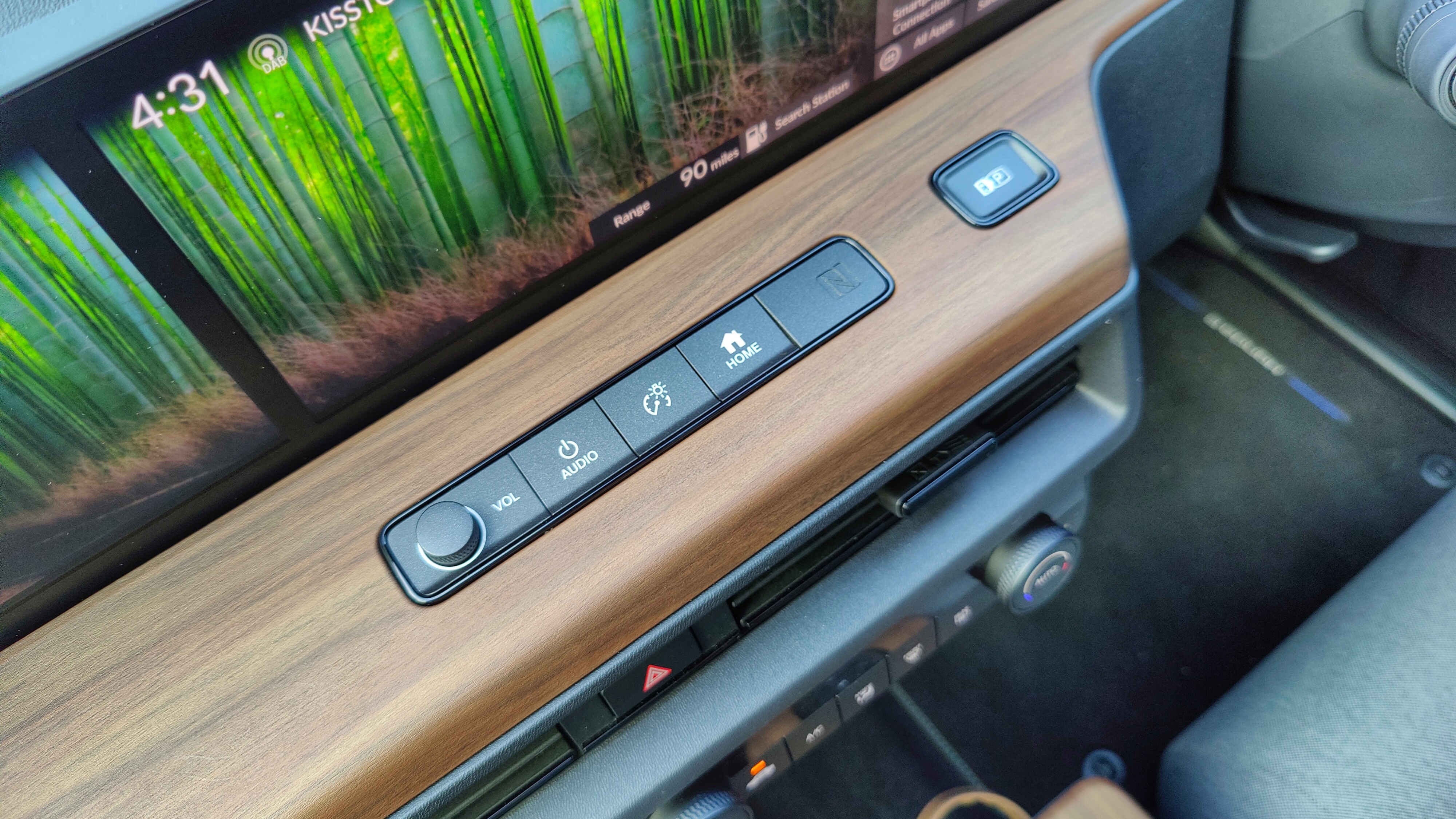
While the 12-inch display is somewhat removed from the large, 4K, HDR-toting TVs we’re used to gaming on, it does work in the Honda e. It’s easy to set up, and easy to play.
An hour of play on the power-hungry PS5 saw the battery drop just 2% – so there's the potential here for some serious gaming sessions. Not that you'd be taking your PS5 with you everywhere, but this feature brings a whole new level of versatility to the Honda e.
Safeguards are in place too. You have to be in Park for the HDMI input to work, which sensibly stops you playing games or watching movies while on the move. Rear seat passengers aren't forgotten either, with a further two USB ports accessible to them.
Finally, the two smaller displays are part of the digital wing mirror system on the Honda e. They sit in line with the rest of the screens, and this means they're at a height where they feel natural to look at.
We've experienced digital mirrors in other cars, such as the Audi e-tron Sportback, where the displays are mounted into the door panel, which places them lower down than you'd instinctively want them.
So their location on the Honda e is better, but the viewing angle provided from these static cameras still isn't ideal, and we'd have liked to have seen some level of adjustment.
The mirrors themselves work well though, and while it will require some getting used to for those who haven't experienced digital mirrors before, it doesn't take too long to become accustomed to the setup.
Should I buy a Honda e?

Buy it if…
You're after an impressive party trick
There aren't many cars around that let you plug and play your PS5, but the Honda e can do just that. Ridiculous? Maybe. Expensive for a party trick? Sure. Fun? Absolutely.
You want a city runabout
The Honda e is easy to park and nimble on the streets, and has enough space for a couple of passengers – and the boot isn't too bad either.
You want a host of screens and port options
With three 12-inch displays flanked by two smaller screens for the digital wing mirrors, there's a lot of screen real estate on offer, plus a whole host of ports for charging, and – yes – playing games.
Don't buy it if…
You need to drive long distances
The quoted range isn't great, what you'll actually get is around 100 miles if you don’t go above 40mph. A road-trip machine this ain't.
You're after a cheap, compact EV
The Honda e's cuteness comes at a cost. It's more expensive than the Renault Zoe and Fiat 500e, both of which offer more range, but are less exciting from a tech perspective.

TechRadar's former Global Managing Editor, John has been a technology journalist for more than a decade, and over the years has built up a vast knowledge of the tech industry. He’s interviewed CEOs from some of the world’s biggest tech firms, visited their HQs, and appeared on live TV and radio, including Sky News, BBC News, BBC World News, Al Jazeera, LBC, and BBC Radio 4.